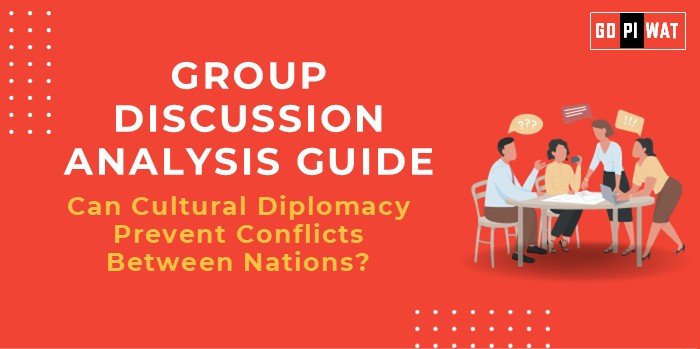📋 Group Discussion Analysis Guide: Can Cultural Diplomacy Prevent Conflicts Between Nations?
🌐 Introduction to Cultural Diplomacy
📖 Opening Context
In an increasingly interconnected world, cultural diplomacy serves as a soft power tool to build bridges between nations, fostering understanding and preventing conflicts. Its role has grown in prominence, especially in the 21st century, as cultural exchanges continue to counter ideological divides.
📜 Background
Cultural diplomacy has historical roots in the arts, sports, and academic collaborations, evolving into a significant diplomatic strategy post-World War II. Examples like ping-pong diplomacy between the US and China highlight its potential in resolving tensions.
📊 Quick Facts and Key Statistics
- 🌐 UNESCO Cultural Programs: Over 150 member countries actively collaborate to preserve cultural heritage and promote peace.
- 🎭 Cultural Tourism Value: Accounts for 40% of global tourism, emphasizing cultural connectivity.
- 📚 Exchanges: The US Fulbright Program has facilitated over 400,000 scholars worldwide, promoting cross-cultural understanding.
- 🏅 Sports Diplomacy: The Olympics, with 200+ participating countries, showcases cultural unity despite geopolitical tensions.
🤝 Stakeholders and Their Roles
- 🏛️ Governments: Facilitate cultural exchange programs and fund institutions like embassies and cultural centers.
- 🌍 International Organizations: UNESCO and similar bodies promote intercultural dialogue and heritage preservation.
- 📢 NGOs and Academics: Conduct grassroots-level initiatives and research on cultural relations.
- 🎨 Artists and Athletes: Serve as ambassadors of culture and symbols of national pride on global platforms.
🏆 Achievements and Challenges
✨ Achievements
- 🏓 Ping-Pong Diplomacy (1971): Helped thaw US-China relations.
- 🌍 UNESCO Peace Programs: Numerous successful cultural projects in post-conflict regions like the Balkans.
- 🧘 India’s Yoga Diplomacy: International Day of Yoga (June 21) promotes unity across 177 countries.
⚠️ Challenges
- 🛑 Cultural Misrepresentation: Lack of authenticity can lead to stereotypes and backlash.
- ⚔️ Politicization: Diplomatic conflicts sometimes overshadow cultural initiatives.
- 🌍 Global Comparisons: Countries like Japan have integrated cultural diplomacy seamlessly, while others struggle with funding and strategy.
📖 Case Studies
- 🤝 India-Pakistan Aman Ki Asha: A cultural campaign emphasizing peace.
- 🌍 French Alliance Française Network: Promotes the French language and culture in over 130 countries.
💡 Structured Arguments for Discussion
- 🛠️ Supporting Stance: “Cultural diplomacy fosters understanding and empathy, reducing the likelihood of conflicts by highlighting shared human values.”
- 🛡️ Opposing Stance: “While cultural diplomacy is impactful, its influence is limited in the face of entrenched political and economic conflicts.”
- ⚖️ Balanced Perspective: “Cultural diplomacy alone cannot prevent conflicts but acts as a vital supplement to political and economic strategies.”
🎯 Effective Discussion Approaches
🔑 Opening Approaches
- 📊 Highlight UNESCO’s role in fostering peace.
- 📖 Cite historical examples like ping-pong diplomacy.
- 💰 Discuss the economic impact of cultural tourism.
⚙️ Counter-Argument Handling
- 🔄 Challenge: “Cultural efforts may fail due to political obstacles.”
- 🤝 Rebuttal: “While true, initiatives like the EU’s Erasmus Program have shown resilience in maintaining cultural ties amid crises.”
🧠 Strategic Analysis of Strengths and Weaknesses
SWOT Analysis:
- 💪 Strengths: Non-invasive, globally appealing, and versatile in application.
- 🛠️ Weaknesses: Slow results, resource-dependent, and vulnerable to political disruptions.
- 🌟 Opportunities: Leverage technology for virtual exchanges and expand global cooperation.
- ⚠️ Threats: Rising nationalism and declining funding for arts and cultural programs.
🏫 Connecting with B-School Applications
📚 Real-World Applications
- 🌍 Study how cultural diplomacy influences international business and global brand strategies.
🎓 Sample Interview Questions
- ❓ “Can cultural exchanges mitigate business risks in foreign markets?”
- ❓ “What role does cultural diplomacy play in global leadership?”
💡 Insights for Students
- 📈 Explore internships with cultural NGOs.
- 🤝 Analyze how cultural diplomacy enhances public relations in global corporations.


